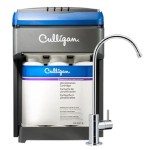How to Remove a Sink Plug: A Comprehensive Guide
Removing a sink plug, also known as a stopper, can be necessary for various reasons, including cleaning, retrieving lost items, or performing plumbing repairs. While some sink plugs are designed for easy removal, others require a more methodical approach. This article provides a comprehensive guide to removing various types of sink plugs, outlining the necessary tools and techniques to complete the task safely and effectively. Identifying the type of sink plug is the first crucial step in the removal process. Knowing whether one is dealing with a pop-up, lift-and-turn, or a simple rubber stopper will dictate the appropriate removal method.
Identifying Common Types of Sink Plugs
Before attempting to remove a sink plug, accurately identify the type in use. The most common types include pop-up stoppers, lift-and-turn stoppers, push-button stoppers, and simple rubber stoppers. Each type has a different mechanism and requires a specific removal technique.
Pop-up Stoppers: These stoppers are commonly found in bathroom sinks and are operated by a lever located behind the faucet. The lever controls a rod that connects to the stopper, raising and lowering it. These stoppers are often metal and have a decorative top.
Lift-and-Turn Stoppers: This type of stopper features a knob or lever directly on the stopper itself. To engage or disengage the stopper, one must lift it slightly and then turn it. These are typically found in bathroom sinks as well.
Push-Button Stoppers: As the name suggests, these stoppers are activated by pressing down on the top of the stopper. Pressing it again releases it. These are commonly found in newer bathroom sink installations.
Rubber Stoppers: These are the simplest type of stopper. They are usually made of rubber or a flexible plastic and are inserted directly into the drain opening. They rely on friction to stay in place and are commonly found in kitchen sinks or bathtubs.
Once the type of sink plug is identified, the appropriate removal method can be determined and implemented. The following sections provide specific instructions for each type of stopper.
Removing a Pop-Up Stopper
Removing a pop-up stopper generally involves disengaging the connecting rod from the stopper mechanism. This requires access to the area beneath the sink where the drainpipe and connecting rod are located. Gather necessary tools: a basin wrench or pliers, a small container to catch water, and perhaps a flashlight to improve visibility.
The first step is to locate the pivot rod, which is the horizontal rod that connects the lift rod (the lever behind the faucet) to the stopper. There is typically a spring clip or nut securing the pivot rod to the drainpipe. Loosen the nut or remove the clip to disconnect the pivot rod.
Once the pivot rod is disconnected, the stopper can usually be lifted straight out of the drain. Sometimes, the stopper may be corroded or stuck. In this case, gently wiggle the stopper while pulling upwards. Avoid using excessive force, as this could damage the drainpipe or the stopper itself.
If the stopper remains stuck, try loosening any debris or buildup around the stopper with a small tool, such as a screwdriver. A penetrating oil lubricant can also be applied to help loosen the stopper. Allow the lubricant to sit for a few minutes before attempting to remove the stopper again. After the stopper is removed, cleaning the stopper and drain is recommended to prevent future blockages.
Removing a Lift-and-Turn Stopper
A lift-and-turn stopper is designed to be removed more easily than a pop-up stopper, but it can still present challenges if it is corroded or stuck. The first step is to try unscrewing the stopper by turning it counterclockwise. Some lift-and-turn stoppers have a visible screw or set screw on the side of the stopper. If a screw is present, loosen it with a small screwdriver before attempting to unscrew the stopper.
If the stopper does not unscrew easily, consider using a rubber glove or a jar opener to improve grip. Wrap the glove or opener around the stopper and apply gentle pressure while turning. Avoid using metal tools directly on the stopper, as this can scratch or damage the finish.
In some cases, the stopper may be stuck due to mineral buildup or corrosion. Applying a descaling solution or vinegar to the base of the stopper can help to loosen it. Allow the solution to sit for a few minutes before attempting to unscrew the stopper again. If the stopper has a recessed area at the top, try filling it with the descaling solution to allow it to penetrate the threads.
If the stopper still refuses to budge, carefully use a small, flathead screwdriver to gently pry around the base of the stopper, working to break the seal. Be extremely cautious not to damage the sink's surface or the stopper itself. After the stopper is removed, clean the drain and stopper thoroughly to remove any debris or corrosion.
Removing a Push-Button Stopper
Push-button stoppers can sometimes be removed simply by pulling them straight up, but often they have a more complex mechanism for securing them in place. Start by pressing the stopper down to the closed position.
Look closely at the sides of the stopper. Some push-button stoppers have a small indentation or slot. These may conceal a release mechanism. Use a small, flathead screwdriver or a thin knife to gently pry in this area. Apply slight pressure while gently pulling upwards on the stopper.
If there is no visible release mechanism, try gripping the stopper firmly and twisting it gently while pulling upwards. This may disengage any internal locking mechanism. As with other types of stoppers, apply penetrating oil or a descaling solution if the stopper is stuck. Allow time for the solution to soak in and loosen any debris.
If the stopper continues to resist removal, the drainpipe beneath the sink may need to be disassembled to access the stopper mechanism from below. This is a more complex process and may require the assistance of a qualified plumber. Photographing or documenting the steps taken during disassembly will aid in reassembly.
Removing a Simple Rubber Stopper
Removing a rubber stopper is typically straightforward, but sometimes they can become stuck due to suction or debris. The first step is to try wiggling the stopper while pulling upwards. If the stopper is tightly sealed, try using a small hook or bent wire to grab the stopper from the side. Insert the hook between the stopper and the drain opening and gently pull upwards.
If the stopper remains stuck, running hot water around the edges of the stopper can help to loosen it. The heat will expand the rubber and break the seal. Alternatively, apply a small amount of lubricant, such as dish soap or petroleum jelly, around the edges of the stopper. This will help to reduce friction and make it easier to remove.
In some cases, the stopper may be deformed or damaged, making it difficult to grip. In this situation, consider using pliers or a similar tool to grip the stopper and pull it out. However, be careful not to damage the drain opening or the stopper further. If the stopper breaks apart during removal, use needle-nose pliers or tweezers to remove any remaining pieces from the drain.
After removing any type of sink plug, it is essential to clean both the stopper and the drain thoroughly. Use a brush or cloth to remove any debris or buildup. Flushing the drain with hot water can also help to clear any remaining particles. Regularly cleaning the sink plug and drain will prevent future blockages and ensure proper drainage.
When dealing with plumbing, taking necessary precautions is paramount. Always turn off the water supply to the sink before disassembling any drain components. This will prevent potential water damage and ensure a safe working environment. If unsure about any step of the removal process, consult a qualified plumber.
Proper maintenance of sink plugs and drains includes regular cleaning and inspection. Regularly remove and clean sink plugs to prevent the build-up of hair, soap scum, and other debris. This will ensure the continued functionality of the sink and prevent the need for more extensive repairs. Consider using drain screens or strainers to catch debris before it enters the drainpipe. This will further reduce the risk of clogs and prolong the life of the plumbing system.

Need To Remove A Bathroom Sink Stopper It S So Easy

How To Replace A Sink Stopper Quick And Simple Home Repair

How To Remove A Pop Up Sink Basin Plug

How To Remove A Kitchen Sink Drain 13 Steps With Pictures

How To Remove A Stopper From The Bathroom Sink Family Handyman

How To Remove A Sink Pop Up Stopper

How To Remove A Bathroom Sink Pop Up Stopper

Need To Remove A Bathroom Sink Stopper It S So Easy

How To Fix A Stuck Sink Stopper Fast Easy Diy Solutions

Quick Tip 26 Pop Up Stopper Sticks Misterfix It Com







